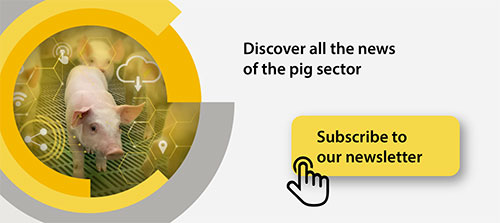Blog
Blog
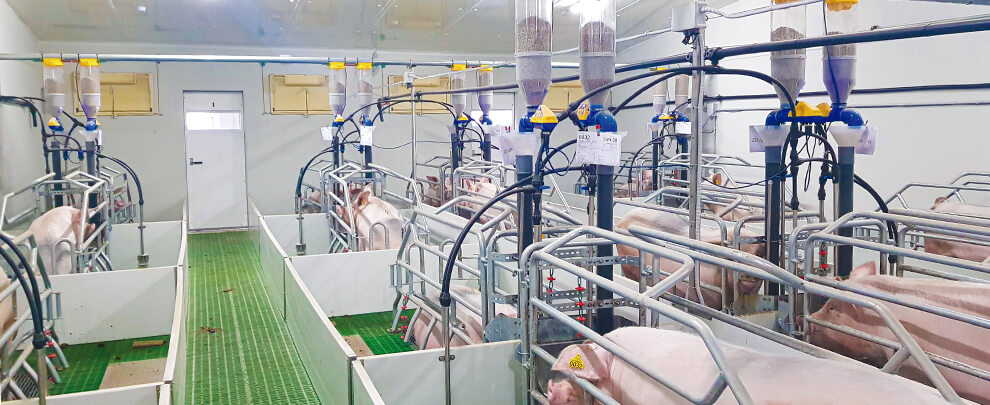
How to reduce the number of stillbirths with feed?
02nd August 2022 - Studies
Josep Rius. Rotecna R+D Department.
The incorporation of electronic feeding for sows has opened up a wide field of possibilities to improve their well-being and productivity. One of the great advantages of having this type of equipment on farms is that it allows you to have an updated tool with which to apply the new advances generated and offered by scientific research, which begin to bear fruit after the experimentation that is being carried out since they began to implement this type of equipment.
One of its great contributions is the possibility of having a feeding system that can offer food 24 hours a day, which has allowed all kinds of food tests unthinkable before this type of device was introduced, such as, for example, the relationship between the time elapsed between the sow’s last meal, the onset of calving, the duration of labour, and its correlation with stillborn piglets.
It is not a new topic, but to have the necessary tools to apply it is new. If they are not available, they depend on the caregivers’ schedule to feed the animals, which often does not correspond to their needs.
STILLBORN PIGLETS
As we already know, when we talk about stillbirths, we should differentiate between those who are already dead before childbirth and those who die during childbirth. In this case, we will only focus on those who die of asphyxiation during prolonged labour, without forgetting that there are predisposing factors in the morphology of piglets and placenta that are already present before labour begins (C. Farmer, S.A., Edwards. The suckling and weaned piglet. Wageningen Academic Publishers. Pages 9-39).
In general, several aspects can affect the increase in the duration of labour:
- Numerous litters. A larger number of piglets can lead to a longer and more complicated farrowing for the sow, as well as less uniformity of the litter. In particular, small piglets are at a higher risk.
- Body condition. Sows who are obese or have excess dorsal fat have been shown to have a higher calving duration and a propensity to have weak and dystocic calving. They are usually animals that are not very agile to make movements before and during childbirth and whose respiratory difficulty tends to increase when the temperature and humidity are high (Graph 1).
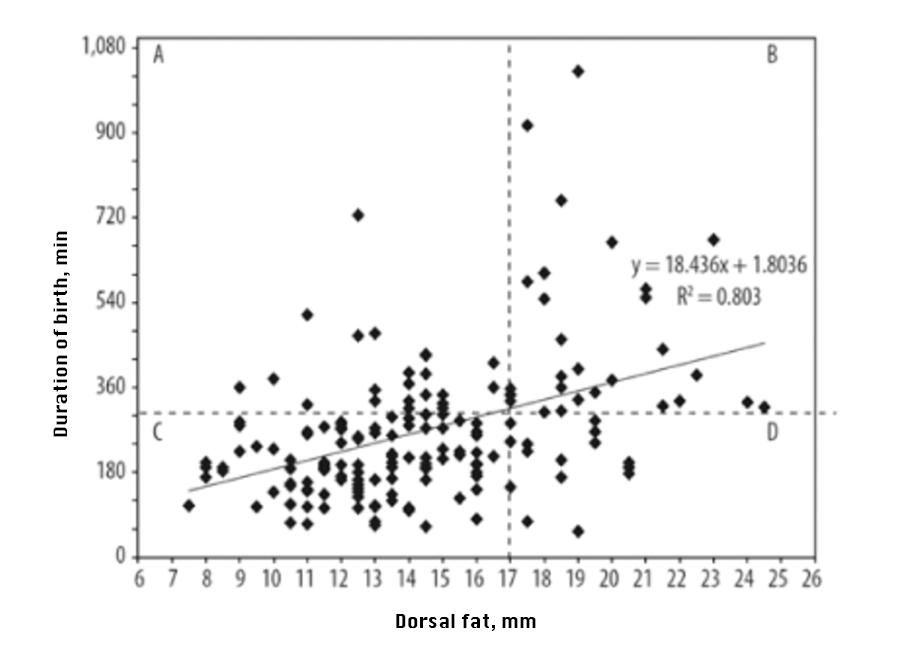
Graph 1. Effect of dorsal fat thickness on labour duration (Oliveiro, 2010).
- Welfare. Pain and stress before and during childbirth can affect the synthesis of hormones such as oxytocin and prolactin, affecting the duration of labour and milk production. The injury and inflammation associated with childbirth (especially in dystocia) can have negative effects on well-being and productivity. Research with free-birthing plants shows that the supply of material for nest building before calving reduces their duration and the percentage of stillborn piglets compared to controls without relevant substrate.
- Environmental control. Not having a good air circulation for gas exchange and adequate availability of oxygen before and during childbirth impacts the heart and respiratory rate, due to the metabolic increase for various physiological processes, such as uterine contraction.
- Production cycle. In first-timers, either because of novelty and inexperience or because the piglets are too large, and in advanced cycles with numerous litters, the sows get tired earlier, prolonging the duration of calving.
FEEDING BEFORE CHILDBIRTH
The process of transition from the pregnant sow to farrowing is a critical period to maintain their health and productivity. As a rule, of the energy ingested by a sow in gestation, 70% or more is used to cover its maintenance needs, and only about 30% is used for production (fetuses, placenta, amniotic fluid, membranes, uterus). In the days leading up to calving, the sow significantly increases its demand for nutrients to meet fetal growth and breast gland and tissue growth, in preparation for colostrum and milk production. Faced with these needs, sows enter a negative energy balance and metabolically go from an anabolic to catabolic state to, through their body reserves, try to mobilize the strong nutritional demand to which they are subjected (for example, piglets double their weight in the last two weeks of gestation). As we already know, we must avoid extremes and take into account that a moderately negative energy balance in those 10 prepartum days has benefits for dairy production (Alonso and Palomo, 2021).
This nutritional demand will be subject, among others, to the weight, body condition and reserves of the sow, its growth and maintenance needs, the size of the litter and its ability to mobilize energy and minerals, specifically calcium and zinc.
Feeding with gestation diets has a low protein and energy density, while lactation diets have a high protein and energy content, as well as very different levels of fibre and digestible calcium /digestible calcium/digestible phosphorus, which implies a quantitative and qualitative leap that we must take into consideration. In practice, on farms, often limited by infrastructural and management factors, the transition from one feed to another is done as it suits each one, understood as the easiest, and not necessarily as the optimal leap from the nutritional point of view (Alonso and Palomo, 2021). Of course, the optimal one would be to include a peripartum feed with the right composition to meet the nutritional needs of the sows in the delicate transition period.
ENERGY BEFORE AND DURING CHILDBIRTH
In 2017, a study by the Department of Animal Science at Aarhus University (Denmark) led by Peter K. Theil showed that ensuring a continuous supply of energy with a high-fibre diet to sows during the days leading up to calving markedly improved the potential to increase piglet survival and vitality.
The study compared two groups of animals:
- Group 1: sows are conventionally fed 3 times a day, concurring with the working hours of the operators.
- Group 2: sows fed 4 times a day with electronic dispensers at 6-hour intervals.
The results showed that the duration of calving and the number of stillborn piglets in Group 2 sows were reduced because they had more energy to cope with calving. Specifically, sows that began to give birth 3 hours after the last feeding had a longer farrowing compared to sows that began to give birth within 3 hours after the last feeding. If labour began 6 hours or more after the last intake, the duration of labour was even longer, leading to a significantly higher number of stillborn piglets.
Peter K. Theil emphasizes that it is not a good solution to increase the food supply daily because that will not be of any help. The real problem is that starch is absorbed in the intestines in the form of glucose, and this occurs in the first four to six hours after feeding.
Prolonged labour due to energy depletion before and during labour causes fatigue. The longer the time from the last feeding until labour begins, the longer the duration of labour, therefore, the greater the risk of stillborn piglets, and there will be a greater need for labour support, with the consequent risk of infection.
HOW TO ADJUST A SCHEDULE TO DISTRIBUTE ENERGY WITH DOSITRONIC M?
You can do whatever you want. In table 1 we have an example with 4 feeding periods with 6 hours between them:
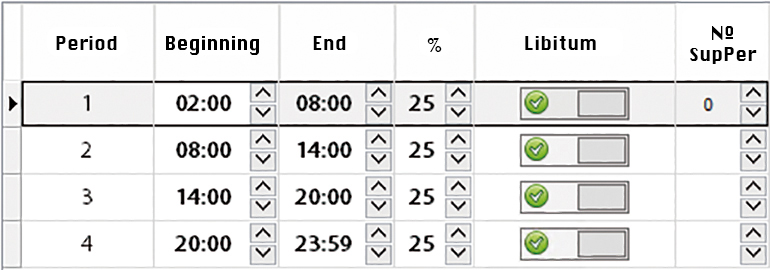
Table 1: Example with 4 feeding periods.
In table 2 we have another example with 5 feeding periods, with 4 hours between them during the night, and 5 hours during the day. In this case, the supply has been boosted during the night because on this farm they analysed the frequency of sows giving birth and concluded that a higher percentage of sows gave birth at night.
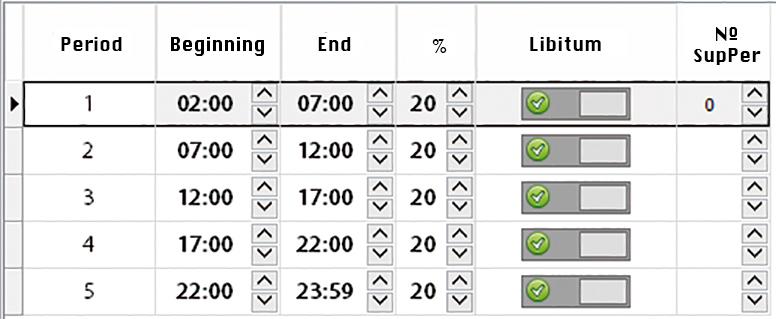
Table 2: Example with 5 feeding periods.
To encourage sows to get up, eat and drink, the system offers a small configurable portion at the beginning of each feeding period. The caretaker who is in the birth pens has a practical system of LEDs of different colours that informs him of how the sows are eating.
CONCLUSION
The incorporation of electronic feeding for sows, in this case gestating sows, provides a multitude of advantages that improve the animals’ performance. Having the option to ensure a constant energy supply throughout the day before delivery is one of them. Reducing the duration of calving not only has consequences on decreasing the number of stillbirths but also directly contributes to improving the vitality of live-born piglets. All this, accompanied by correct management of the feed during the transition period helps to improve the quality and quantity of the colostrum, the adaptation of the sow to the lactation curve, its milk production and the survival of the piglets, without forgetting the improvement in the welfare of sows and piglets and the economic benefit that entails.
Some farms with Dositronic M have decided to apply this type of feed in prepartum. There is still time to draw conclusions, but in the one, they have been applying for the longest time (5 months), they have managed to reduce stillbirths by 0.4.
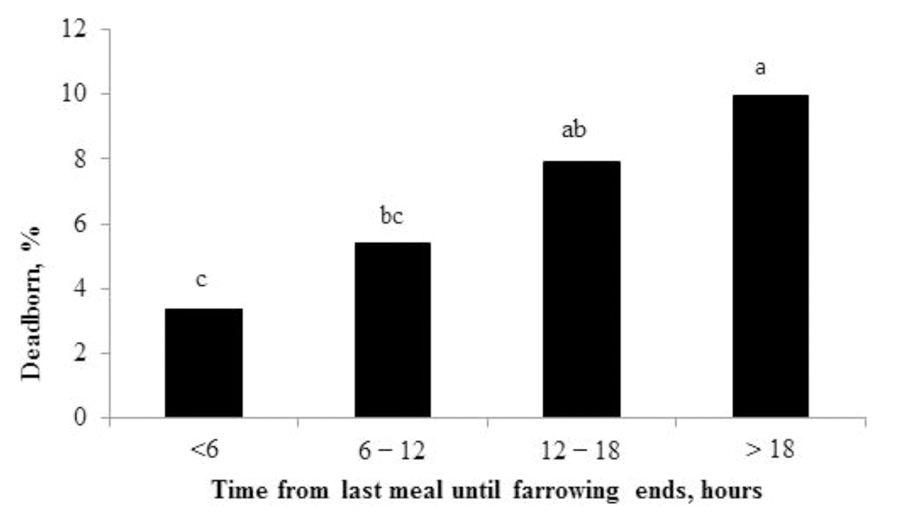
The number of stillborn piglets increases as the time from the last feeding to the end of calving increases (Theil, 2017).







